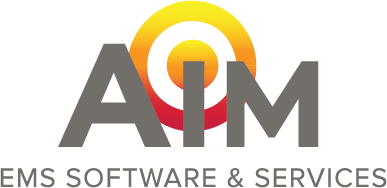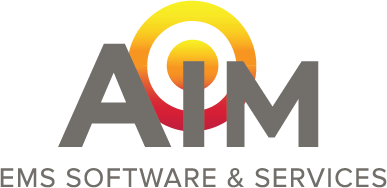
Delays in EMS ambulance dispatch disrupt the entire EMS patient care process.
What begins as a non-issue can easily expand and impact crew resources, transport vehicle resources, patient satisfaction scores, referring agency satisfaction, and above all, patient care. Certainly, some delays are unavoidable due to traffic or other uncontrollable influences.
However, given that ambulance dispatch call delays can completely destroy the successful flow of EMS response to emergency and non-emergency scheduled and non-scheduled patient transport requests, the ambulance system must aim to minimize delays.
Weak Data Collection Leads to Ambulance Dispatch Delays
The ambulance dispatch center is the original point of data entry for any ambulance dispatch call. Dispatch call delays often result from issues here.
- EMS data collection redundancy: If an ambulance dispatcher is required to handwrite information and repeat the data entry process into one or more systems, redundant data entry points result. Clearly if an ambulance dispatcher had to input dispatch call data into the agency's EMS reporting system, then type the same information into a separate EMS crew paging system, an additional point of entry would be created. This welcomes potential errors in the ambulance dispatch system.
- EMS data collection errors: Repetitive ambulance dispatch entries can lead to typos and mistakes, similarly to the age-old "telephone game” in which a message becomes hopelessly distorted through transmission over time. Talk radio systems are especially prone to these errors. A dispatcher for ambulance dispatch could make an error while relaying information over the voice radio. However, if the information travels directly from the point of data entry to the EMS crew digital receiving device, errors become much less likely.
- Privacy concerns: While necessary mention of a patient's name via voice radio is not a HIPAA violation, best practice remains using as little patient information as possible. To avoid HIPAA breaches and better protect patient privacy, transferring patient information via mobile data terminal exceeds transmission over voice radio every time.
- Lack of dispatch call validation: As mentioned in the previous blog Get Rid of Manual EMS Dispatch Data Entry, data validation is absolutely essential for ambulance dispatch centers. Weak data collection during dispatch calls creates difficulty and can make data validation impossible, causing delays and various other issues. For example, imagine a scenario where Mary Smyth requires transportation for her weekly dialysis, versus a different Mary Smith who may undergo a similar repetitive ambulance transport. The problem now seems obvious, but in a real field situation can go unchecked and cause a major headache later on. In a digital ambulance dispatch system, utilizing best EMS practices, this data would be validated automatically by the ambulance dispatch software to ensure that the transporting crew has received the proper patient information.
- Inaccurate Data: If inaccurate data from the initial point of entry of the dispatch call goes by uncorrected, it could lead to errors down the digital line in the ePCR as well as the patient's bill. To best explain inaccuracy, let's expand on the prior example. Imagine the transporting crew set out to pick up Mary Smyth, but instead was inadvertently dispatched to pick up Mary Smith and they created a patient record from the ambulance dispatch record. Obviously, EMS billing and ePCR errors will result from this avoidable mistake.
Eliminating Ambulance Dispatch Workflow Weaknesses
The following ambulance dispatch best practices create an immediate sense of awareness to strengthening common weaknesses.
- Seamless data transfer enables one-time input that carries through to the ePCR, reducing opportunities for error in the patient billing.
- A secure online data entry system with multiple validation points and fields that match mobile devices with EMS providers reduces redundancies and errors and protects patient information to reduce potential HIPAA violations.
- Properly validate dispatch call data. For more information on this crucial step in the ambulance dispatch process, read Do What You Do Best Even Better: Get Rid of Manual EMS Dispatch Data Entry. Utilization of any EMS dispatch system double and triple-checks data during validation.
- Digital data receiving devices eliminate the chance of ambulance dispatch error by removing the opportunity for oral miscommunication.
Avoid ambulance dispatch call delays, mistakes, and HIPAA violations by adopting best practices like those highlighted in this post.
To learn more about how AIM can assist in improving your EMS Dispatch, please give us a call today at 1-800-726-4690.




